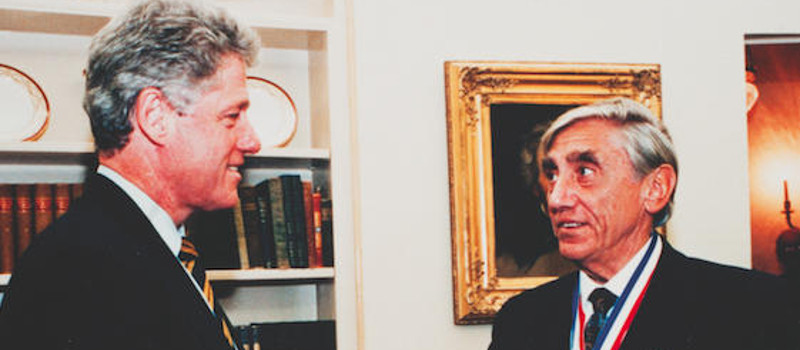When we create a printed circuit board, the chances are these days that we’ll export it through our CAD package’s CAM tool, and send the resulting files to an inexpensive PCB fabrication house. A marvel of the modern age, bringing together computerised manufacturing, the Internet, and globalised trade to do something that would have been impossible only a few years ago without significant expenditure.
Those files we send off to China or wherever our boards are produced are called Gerber files. It’s a word that has become part of the currency of our art, “I’ll send them the Gerbers” trips off the tongue without our considering the word’s origin.
This morning we’re indebted to [drudrudru] for sending us a link to an EDN article that lifts the lid on who Gerber files are named for. [H. Joseph Gerber] was a prolific inventor whose work laid the ground for the CNC machines that provide us as hackers and makers with so many of the tools we take for granted. Just think: without his work we might not have our CNC routers, 3D printers, vinyl cutters and much more, and as for PCBs, we’d still be fiddling about with crêpe paper tape and acetate.
An Austrian Holocaust survivor who escaped to the USA in 1940, [Gerber] began his business with an elastic variable scale for performing numerical conversions that he patented while still an engineering student. The story goes that he used the elastic cord from his pyjamas to create the prototype. This was followed by an ever-more-sophisticated range of drafting, plotting, and digitizing tools, which led naturally into the then-emerging CNC field. It is probably safe to say that in the succeeding decades there has not been an area of manufacturing that has not been touched by his work.
So take a look at the article, read [Gerber]’s company history page, his Wikipedia page, raise a toast to the memory of a great engineer, and never, ever, spell “Gerber file” with a lower-case G.















To add even more trivia: Gerber is not a jewish name, it’s most likely referring to the profession which is called tanner in English (the people that create leather out of animal hide).
> Gerber is not a jewish name […]
Not that it would matter here, but he was born to a Jewish family — he fled as an Holocaust survivor 1940 to the US. Go read the Wikipedia article linked above.
But still it is an interesting explanation of the origin of his name, which I didn’t know. Interesting, however no doubt I will never recall it.
Definitely. Perhaps it’s easier to remember if you realize that the word shares a common ancestry with the English “gear” [1] [2]
[1] https://en.wiktionary.org/wiki/gear
[2] http://zwei.dwds.de/wb/gerben
Enjoy
From the trajectory listed on the company’s page it looks like most of the industrial technology was acquired by assimilating existing companies rather than being developed internally.
Thank you very much for bringing this to my attention. A remarkable guy.
“[H. Joseph Gerber] was a prolific inventor whose work laid the ground for the CNC machines that provide us as hackers and makers with so many of the tools we take for granted. Just think: without his work we might not have our CNC routers, 3D printers, vinyl cutters and much more, and as for PCBs, we’d still be fiddling about with crêpe paper tape and acetate.”
…
Or not…
I hate this kind of sentence: an innovation doesn’t come from one’s mind, but from one’s time. With the development of motor controller, computer an other thing, development of CNC and associate language are inevitable. Maybe a bit different, maybe a bit later. But inevitable.
(But still: Kudos to Gerber !)
What really is suprising to me is how long we used a language originally designed to efficiently store weaving patterns in the textile industry that was then transformed for photoplotting to describe our circuit board data. If you look at how gerber files work to describe the graphics, with apertures, flashes and all that, and how far we have come with digital technology and circuit board designs, it’s really kinda baffling that all the other formats like ODB++, GenCAM IPC-2511(A), Gerber X2, or IPC-2581 have a really hard time to gain any grounds against the old Gerber files.
I think this is because noone wants multiple standards instead of one. This is totally justified, I should say. The existence of one proven standard, which can be generated by every CAD and can be read by every manufacturer, is a must in an industry; simply exporting to a good old Gerber is a lot more simpler than thinking of which of new glamourous formats to choose.
Thanks, good article.
Thanks for posting this great article. Article discussion on the Parallax forums from the other day: http://forums.parallax.com/discussion/164106